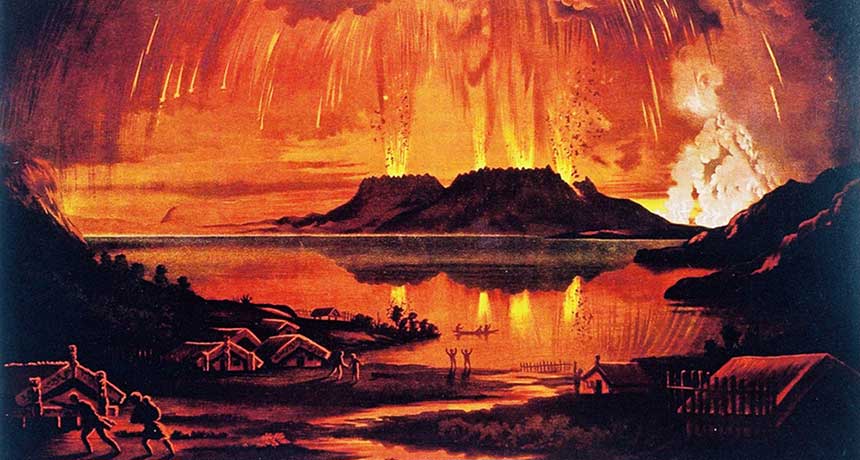Magma stored under volcanoes is mostly solid

Most of a volcano’s magma probably isn’t the oozing, red-hot molten goo often imagined.
Analyses of zircon crystals, spewed from a volcanic eruption in New Zealand, show that the crystals spent the vast majority of their time underground in solid, not liquid, magma, researchers report in the June 16 Science. The results suggest the magma melted shortly before the volcano erupted.
This finding helps confirm geologists’ emerging picture of magma reservoirs as mostly solid masses, says geologist John Pallister of the U.S. Geological Survey in Vancouver, Wash., who was not involved in the study. And it could help scientists more accurately forecast when volcanoes are poised to erupt.
Studying magma reservoirs directly is difficult because they’re buried kilometers underground. Heat and pressure would destroy any instruments sent down there. So Kari Cooper, a geochemist at the University of California, Davis, and her colleagues probed magma by scrutinizing seven zircon crystals from New Zealand’s Taupo Volcanic Zone. These crystals formed between a few thousand and a few hundred thousand years ago, when molten magma from deeper in Earth’s crust crept up to the Taupo reservoir, cooled and crystallized into zircon and other minerals. Some of these other minerals eventually melted back into liquid magma and carried the zircon up and out during an eruption 700 years ago.
By examining the distribution of lithium in the zircon crystals, the researchers discerned how long the zircon had existed at temperatures hot enough to melt its mineral neighbors — that is, how long the magma had stayed molten. Lithium, which the crystals would have picked up from surrounding magma, spreads through zircon faster when it’s hotter, Cooper explains.
The diffusion of lithium indicated that the crystals spent, at most, about 1,200 years exposed to a temperature range of 650° to 750° Celsius. At those temperatures, solid magma melts into a state that’s a little like a snow cone — mostly crystalline, with a bit of liquid seeping through. And for just 40 years, the crystals were exposed to temperatures above 750° — hot enough for magma to completely melt. Since the magma spent the overwhelming majority of its lifetime in the reservoir as a mostly solid mass, scientists surmise it melted briefly only before eruption.
“The other cool thing that we found is that most of the crystals are more than 50,000 years old,” Cooper says. In the last 50,000 years, this volcanic system underwent many eruptions before belching up the studied zircon crystals 700 years ago. The relatively short time these crystals experienced high heat suggests that they weren’t affected much by the magma in those previous eruptions. “Everything has to be much more compartmentalized down there than we originally thought,” Cooper says.
The study’s findings raise questions about how mostly solid magma melts and mobilizes before an eruption, says George Bergantz, an earth scientist at the University of Washington in Seattle who was not involved in the research. Cooper suspects that molten material from even deeper underground seeps up and melts solid magma. But, she says, “it’s still very much an open question.”